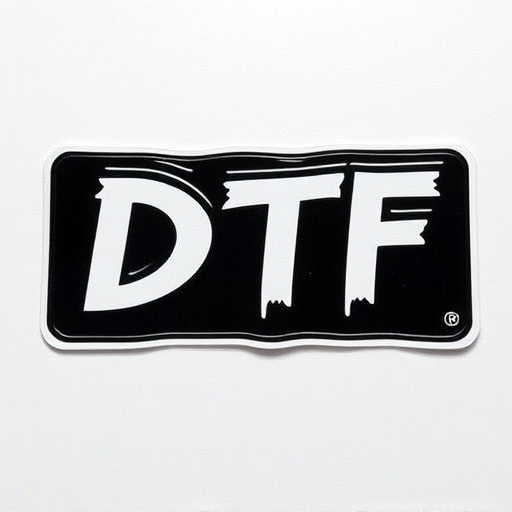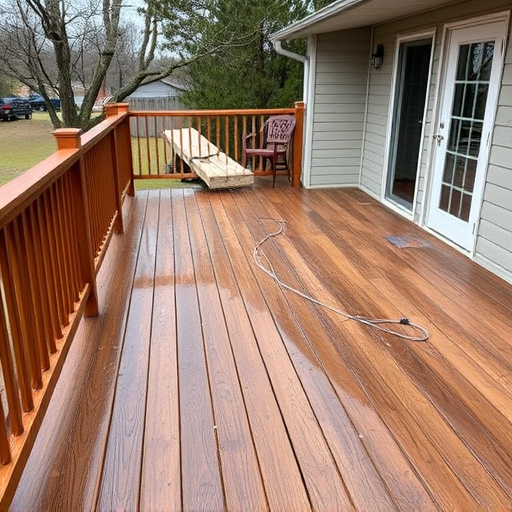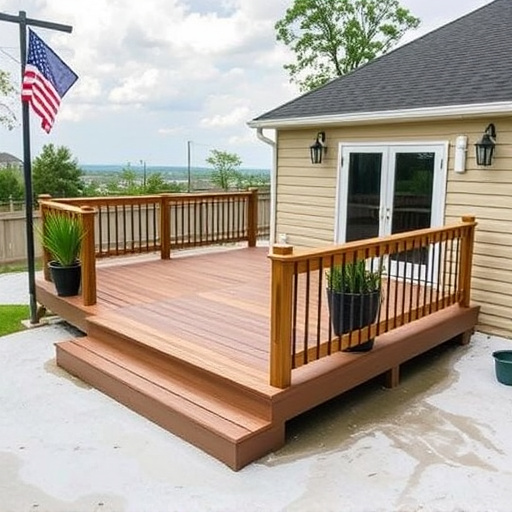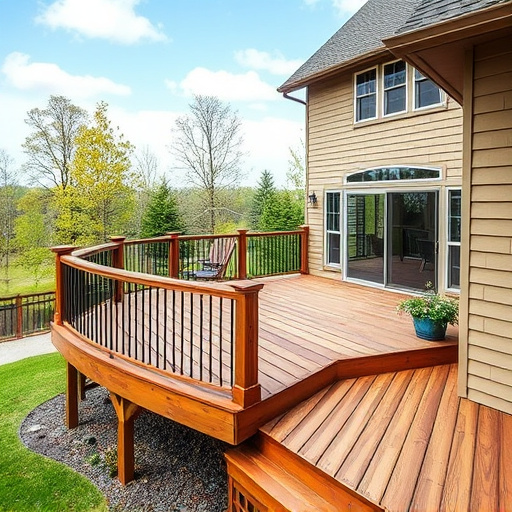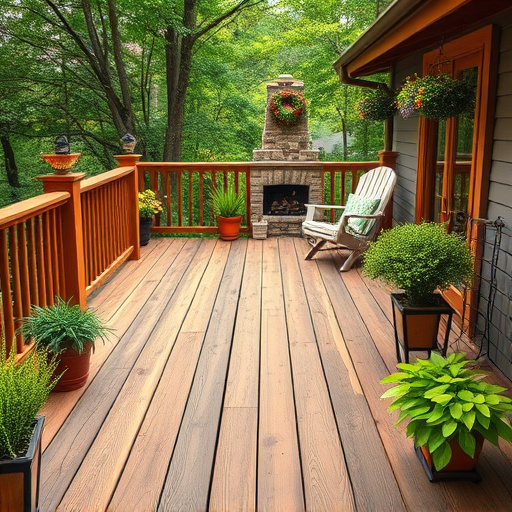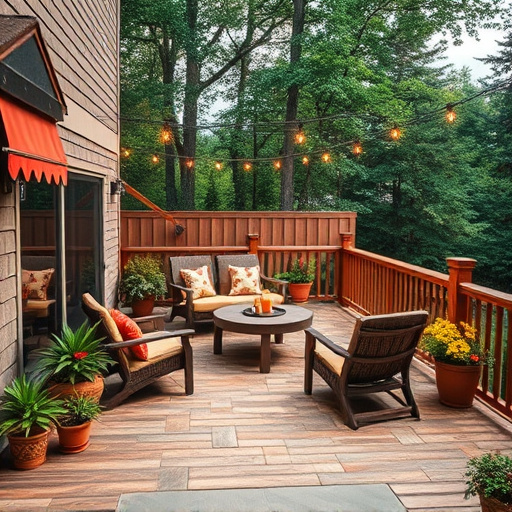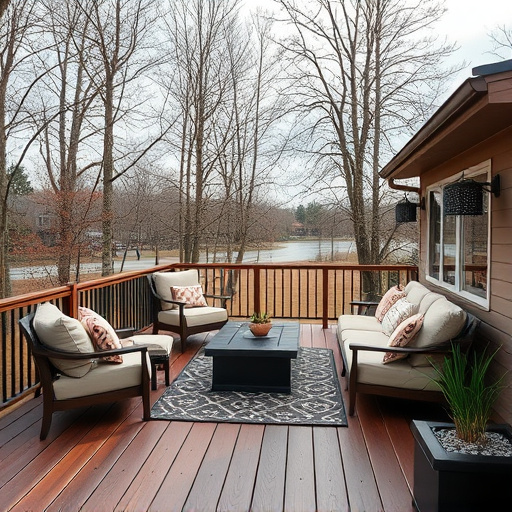Seamless deck board installation requires precise measuring and cutting for an even finish. Use proper fastening techniques like nails and screws with pilot holes or structural clips for durability. Maintain consistent gaps of less than 1/4 inch to prevent moisture intrusion, enhance aesthetics, and ensure long-term deck integrity.
Avoid common pitfalls in deck boards installation with this comprehensive guide. From precise measuring and cutting to mastering fastening techniques, ensure your deck’s longevity. Learn how to prevent gaps and unevenness, two issues that can compromise stability and aesthetics. By adhering to best practices outlined here, you’ll create a sturdy, attractive deck surface using quality deck boards.
- Measuring and Cutting Boards Accurately
- Proper Fastening Techniques for Deck Boards
- Avoiding Common Gaps and Unevenness Issues
Measuring and Cutting Boards Accurately
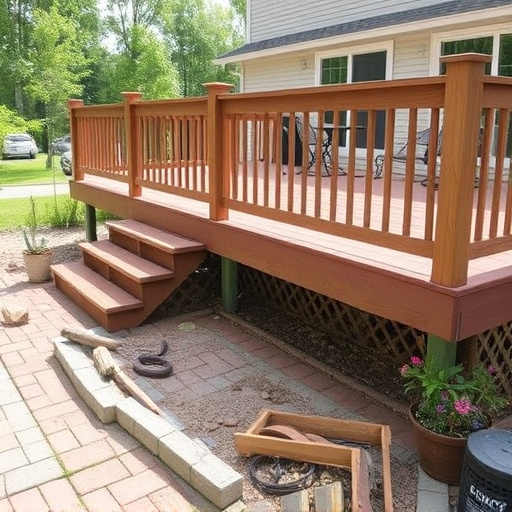
When installing deck boards, accurate measuring and cutting is crucial for a seamless finish. Improper measurements can lead to unnecessary wastage and an uneven appearance. It’s important to take the time to measure your deck surface precisely, considering factors like the length and width of the area to be covered. Use a tape measure to record these dimensions accurately, ensuring you account for any gaps or overlaps required for the specific decking material.
Cutting the boards to size is another critical step. Using a sharp circular saw or handsaw, cut each board to fit snugly into place. Ensure your cutting tools are well-maintained for clean, precise cuts. Aim for straight, even edges to achieve a professional siding installation, whether for residential or professional siding projects. This attention to detail will contribute to the overall aesthetic and longevity of your deck.
Proper Fastening Techniques for Deck Boards
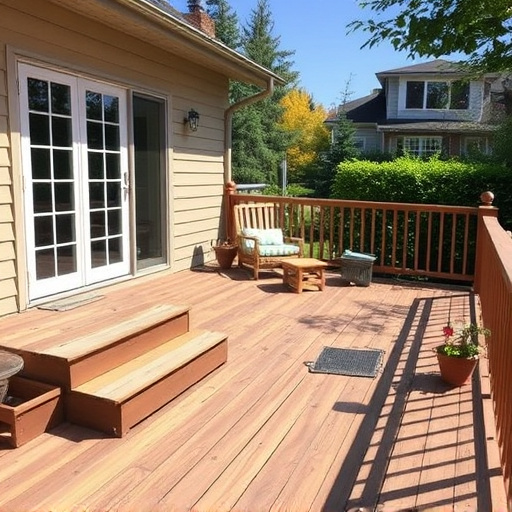
When installing deck boards, one of the critical aspects to get right is the fastening technique. Using the appropriate fasteners for your specific deck board material and climate conditions ensures durability and prevents premature replacements. For wood decks, a combination of nails and screws is often recommended. Start by pre-drilling pilot holes to prevent splitting, then secure boards with both nails and screws at staggered intervals. This method provides stronger hold compared to nailing alone, especially in areas exposed to varying weather conditions like storms or high winds.
Avoid over-nailing or using too many fasteners, as this can damage the deck boards over time. For commercial siding installations or storm damage repair, where decks may face intense weather patterns, consider specialized fastening systems designed for resilience. These systems often involve structural clips and hidden fastener mechanisms that enhance wind resistance without compromising aesthetics. Proper fastening not only ensures the safety of your deck but also preserves its appearance and longevity.
Avoiding Common Gaps and Unevenness Issues
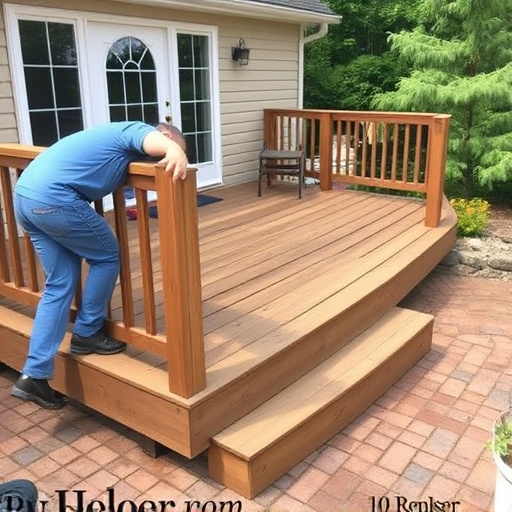
When installing deck boards, one of the most common mistakes to avoid is allowing gaps between them. Gaps not only create an uneven surface but also provide an entry point for moisture, which can lead to rot and other structural damage over time. Ensure a seamless fit by using a level and measuring tape to check the boards’ alignment before nailing or screwing them into place. A consistent gap of less than 1/4 inch between each board is ideal, allowing for some expansion and contraction without compromising the deck’s integrity.
Regular inspection during installation is crucial to catching any unevenness issues early on. Walk along the length of the deck, ensuring boards are flush with one another and lying flat against the deck’s joists. Adjustments can be made using shims or additional fasteners if needed. Preventing these common gaps and unevenness problems not only enhances the aesthetic appeal of your exterior home improvements but also contributes to the structural longevity of your deck, making it more resilient against storm damage repair and other weather-related issues, thereby ensuring your investment in home exterior services is protected.
When installing deck boards, avoiding common mistakes is key to achieving a seamless, attractive finish. By carefully measuring and cutting boards to fit, using appropriate fastening techniques, and paying close attention to gaps and evenness, you can ensure your deck looks its best for years to come. Remember, proper preparation and attention to detail are essential when working with deck boards.

